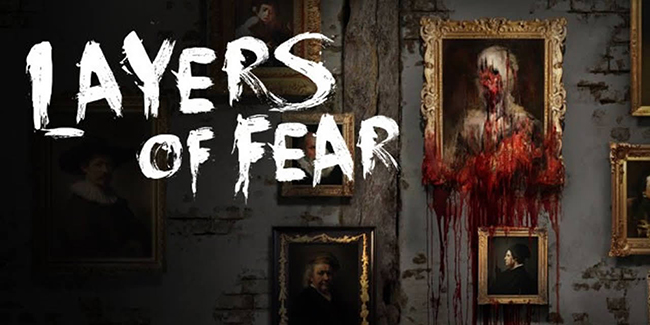
Horror is such an incredible genre, not to mention one that feels right at home within the realm of video games. Instead of simply being a passive observer, you’re an active participant that must endure unfamiliar environments and escape the unknown terrors that lurk around every corner. As a big fan of classic survival horror games such as Silent Hill 2, the Resident Evil series, and, more recently, Alan Wake, I was keen to try my hand at Layers of Fear because I love a good scare. The screenshots looked downright spine-chilling, with the attention to detail cranked up very high.
Developed by Bloober Team, Layers of Fear is a first-person mind-altering horror game designed to frighten and terrorise any players who decide to venture into its Victorian-era mansion. You control the main character, a deranged painter who must collect his memories and conquer the madness that’s consuming him. As you proceed through the mansion, you’ll uncover strange visions, as well as room altering sequences and disturbing imagery. Within its twisted corridors, your goal is to find the final masterpiece – the painting that the main character has forever strived to complete. Personally, I found the story unique and compelling; it was a fresh and twisted concept that drew me right into the experience. You’ll also find a series of newspaper clippings throughout your journey, as well as letters and written notes from the protagonist’s wife, which help to fill the gaps in the story.

Layers of Fear is mostly laid out with clear pathways the player must follow, with much of the game being scripted to drive the story forward. Although, that’s not to say that there isn’t room for exploration as well. Most of the rooms have desk draws and cupboards to look through, and by finding specific items or by performing different acts, you can trigger one of three outcomes at the end of the game. I thought this was a good idea as it encourages more than one playthrough, with some pathways changing the direction of the narrative entirely. If you’re looking to experience as much of the game as possible, it’s important to be thorough when searching the rooms. I suspect some players might find this process a bit tedious, but I personally enjoyed searching for any trace of a clue and also appreciated there was a good balance of items and artwork to uncover.
The gameplay itself is quite similar to the cancelled Silent Hill teaser, P.T. as well as other indie titles such as Gone Home and Slender – all first-person ‘walking simulators’ with minimal controls. All you can essentially do is walk, open doors, pick up collectibles and solve the occasional lock puzzle. As you explore the mansion, doors will require keys or a series of numbers to open locks; there is even a sequence with an old rotary phone that requires a phone number to advance. This process worked okay, but I do wish there were some more complicated puzzles. Simply put, finding numbers on walls or within paintings simply won’t be challenging enough for all players.

One thing that was difficult to overlook was a significant drop in the frame-rate. This causes the controls to be slightly delayed, and even a bit sluggish. I got used to it after a while, but if the development team were to fix this issue, it would significantly improve the playability and smoothness of the game. The overall presentation, however, is top-notch and creative, which is especially important in the horror genre. The Victorian-era mansion is detailed from top to bottom with such high quality finishes and furniture; I was almost convinced at times that I was in a real haunted house. The paintings scattered all throughout the mansion are fantastic, well-crafted, and more often than not spooky!
One painting that I found especially disturbing is the ‘Furboy’ portrait. His eyes always seem to glare directly at you, following your every move. Layers of Fear is brilliant on delivering shock value, and I found myself on the edge of my seat for most of the game. There are plenty of the jump scares and eerie moments that made me want to search the mansion; albeit with great caution. The room changing feature is also well implemented, and is especially good at playing mind tricks on you. It adds a sensation of madness, which I really enjoyed. In addition, the painter does share some dialogue pertaining to his thoughts and feelings on what he’s dealing with. However, I thought the writing and the delivery of dialogue was average and didn’t add much to the illusion/mystic of the already captivating soundscape.

Layers of Fear is a haunting and well-made horror game that is easy to lose yourself in. While it’s a shame the frame-rate isn’t always the best, and some of the puzzles lack the creativity to challenge experienced players, the game still managed to keep me on the edge of my seat the entire time. The game is unsettling yet immersive with a fascinating Victorian-era mansion to explore, and it feels rewarding uncovering the story through your actions. It may be quite short, but it’s worth experiencing if you like a good scare and diving into the unknown. I also highly recommend playing it with the lights off and headphones on to get the full experience. Not often do horror games encourage me to come back, especially one with a twisted and frightening house. However, Layers of Fear is an exception as it offers an authentic level design with a sharp eye for horror, making this game too hard to ignore despite a few shortcomings.











